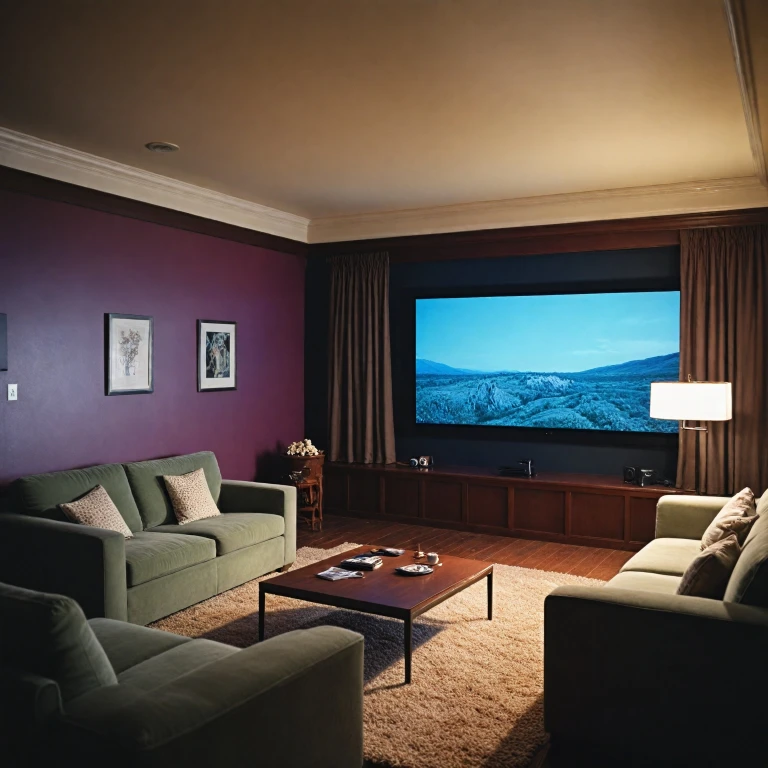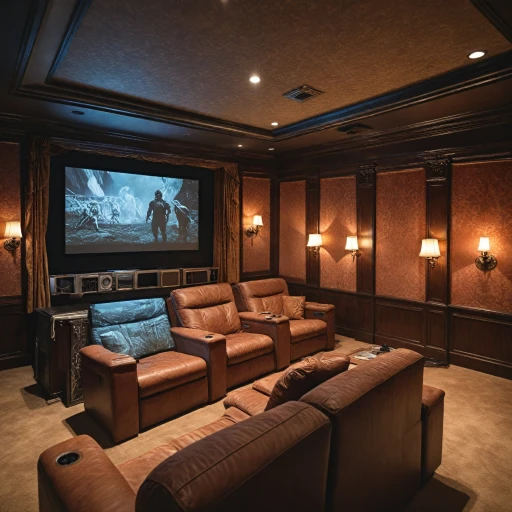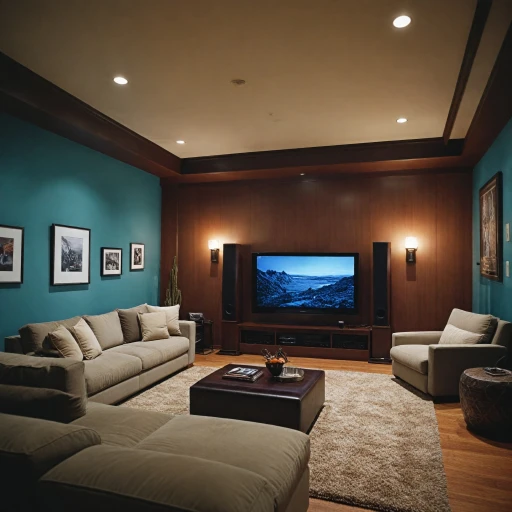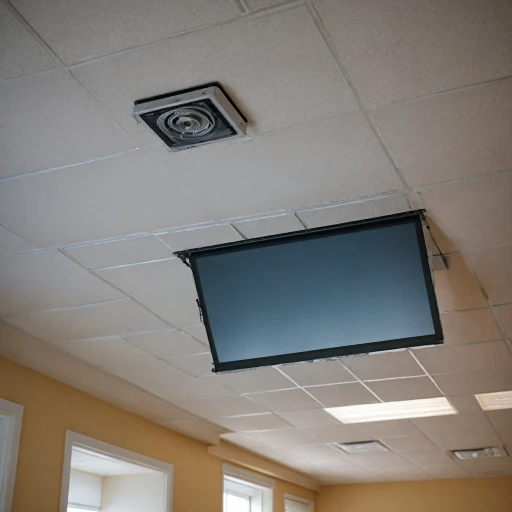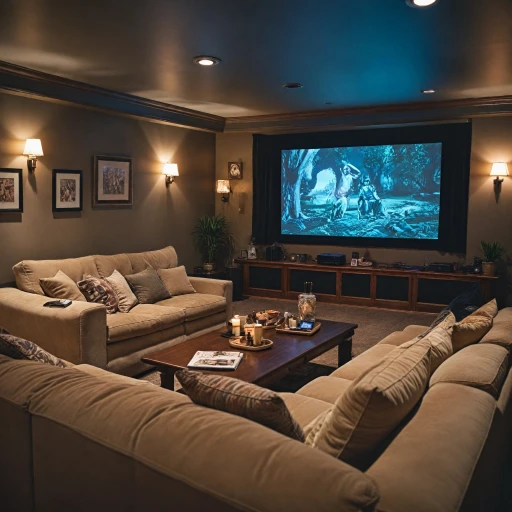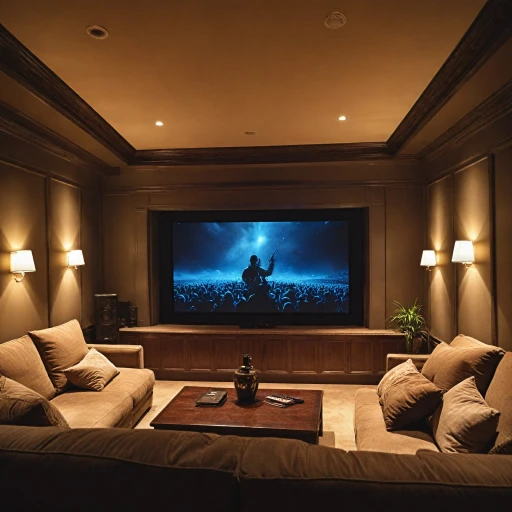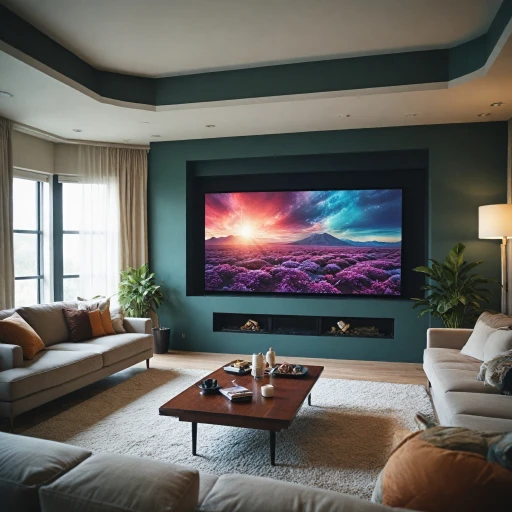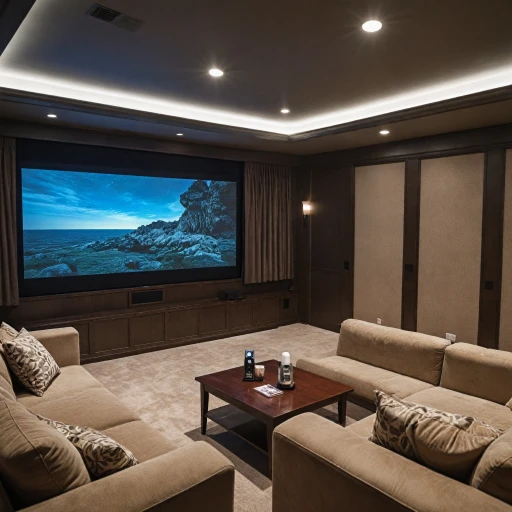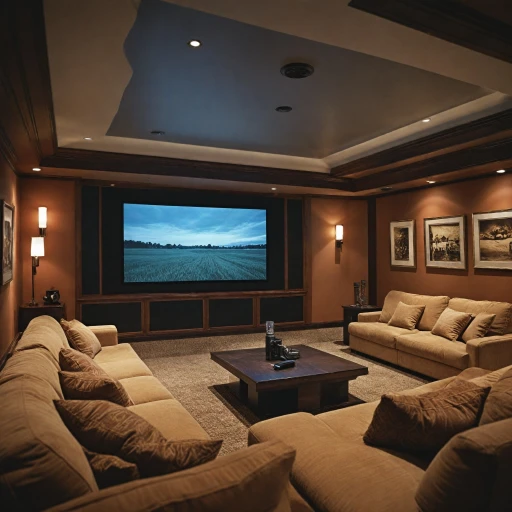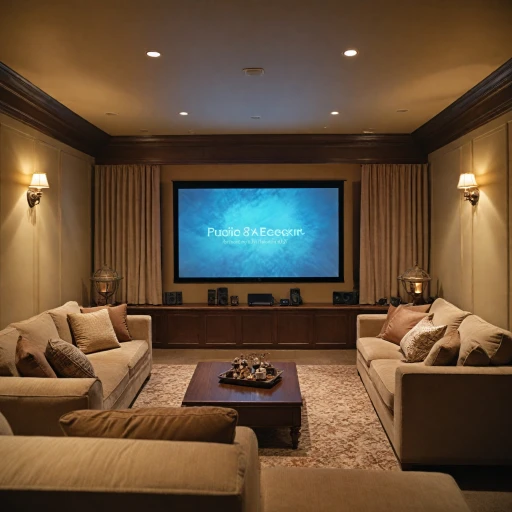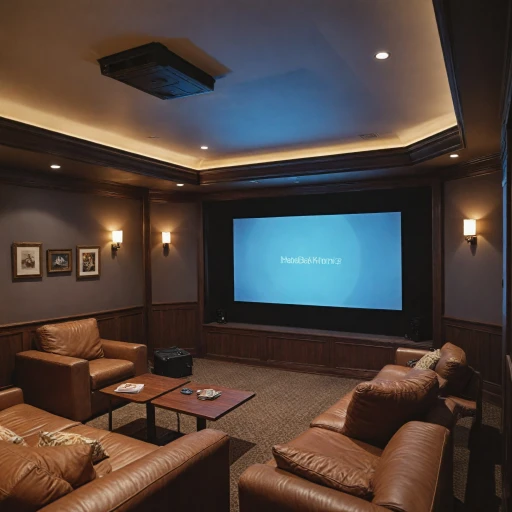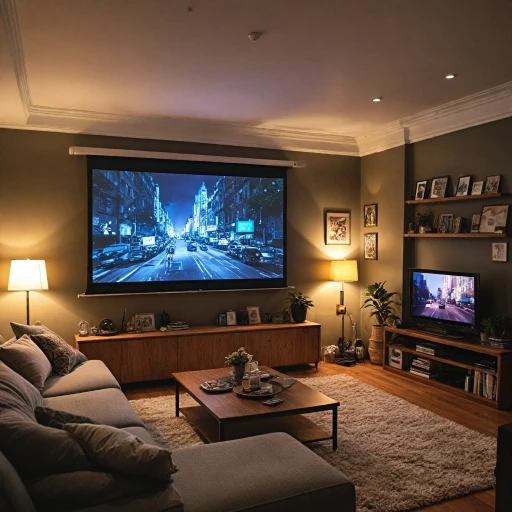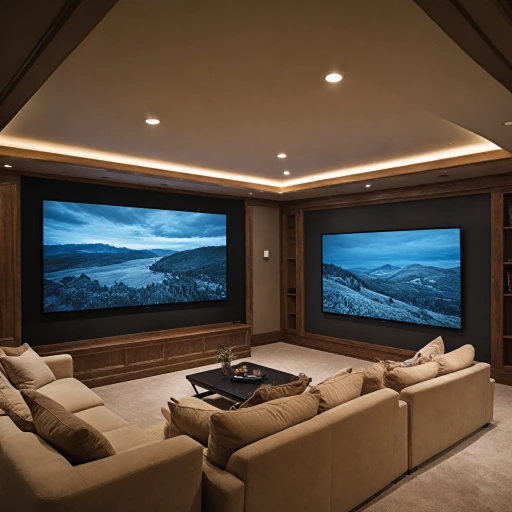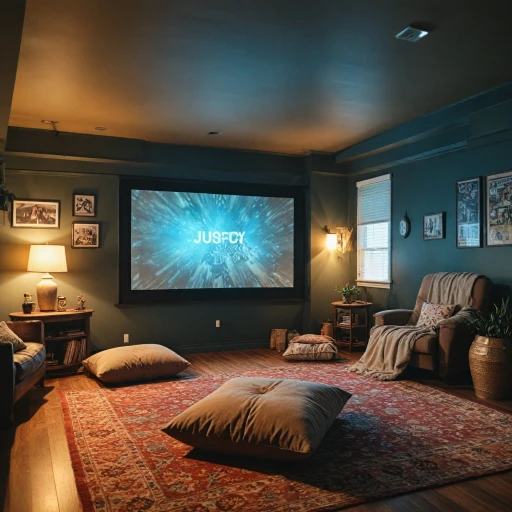
Understanding Fixed Projector Screens
Delving into the World of Fixed Projector Screens
Understanding the essence of fixed projector screens is crucial for anyone looking to boost their home theater setup. These screens serve as a stationary option that remains stretched inside a frame. The frame, typically made of materials like aluminum, holds the projector screen tightly in place. This ensures a flat and smooth projection surface, which is fundamental for optimal image quality. Fixed screens are favored for their ability to deliver superior performance compared to their retractable counterparts. Due to the tension applied by the frame, there are no waves or wrinkles that can sometimes plague roll-up screens. Furthermore, fixed projector screens are often constructed from specialized screen materials that enhance their performance in diverse lighting conditions, including ambient light environments. When it comes to material, options abound, from acoustically transparent screens that allow sound to pass through without quality loss, to high-gain screens for vibrant image rendition. Top brands like Elite Screens and Stewart provide a wide range of products ensuring you can choose based on your requirements related to screen material, size, and pricing. The decision to invest in a fixed projector screen involves consideration of several factors, such as the screen's reflective gain, its ability to reject ambient light, and its compatibility with short-throw or ultra-short-throw projectors. Evaluating these aspects will guide you to the right choice that meets both the functional and aesthetic demands of your home theater. For those intent on achieving the ultimate cinema experience at home, a fixed frame screen offers an unparalleled edge. These screens come in various sizes, from smaller 80-inch models to imposing 150-inch versions, catering to different room sizes and seating arrangements. The durable construction and sleek design make them an attractive, long-term addition to any home theater, while their often competitive sale prices make them accessible options for many. To further explore and expand your understanding of fixed projector screens, consider reading our comprehensive guide on the ceiling-mounted movie screen, where we delve into the advantages of integrating a projector screen with existing home setups.Benefits of Using a Fixed Projector Screen
Advantages of a Fixed Projector Screen
If you're looking to elevate your home theater experience, a fixed projector screen can be a game-changer. There are numerous benefits to choosing this type of screen over others.- Superior Image Quality: Fixed screens boast tensioned surfaces that are permanently stretched across a frame. This flat surface ensures a seamless and clear projection, enhancing image quality with increased sharpness and detail. The gain of the screen material plays a crucial role here, allowing for bright and vivid visuals. Popular choices like Stewart and Elite Screens offer diverse options in gain levels suitable for various environments.
- Durability and Stability: Since fixed projector screens are mounted on a rigid frame, they aren't susceptible to wrinkles or waves that can often plague retractable or portable screens. This not only improves the projection quality but also extends the lifespan of your screen.
- Perfect for Ambient Light: Certain fixed screens, like ambient light rejecting models, are ideal if your theater room isn't completely dark. These screens can reflect light from the projector while minimizing the impact of ambient lighting, making them perfect for multi-purpose rooms.
- Customizable Sizes: Fixed screens come in a range of sizes—from 92-inch to an impressive 200-inch and beyond—allowing customization to fit your specific room dimensions and viewing preferences. Whether you're considering an ultra short throw projector or a standard model, options like Silver Ticket and Elite Screens offer flexibility in terms of screen inch sizes and dimensions.
- Variety of Screen Materials: From silver and acoustically transparent materials to ultra-high definition options, fixed projector screens cater to diverse needs. Whether you're aiming for a cinema-like experience or a discreet setup for detailed audio setups, there's a material to match.
Choosing the Right Fixed Projector Screen for Your Space
Selecting the Ideal Projector Screen
When considering a fixed projector screen, identifying the right match for your space is essential. Tailoring it to your needs involves multiple factors such as screen size, material, and frame design. A well-chosen screen can dramatically enhance your viewing experience.
Screen Size and Viewing Distance
The size of the screen is a critical element to consider. Common sizes range from 100 to 150 inches, but larger or smaller screens might suit different spaces. The distance between your projector and seating will also impact the optimal screen size. Consider your room dimensions to find a balance that offers immersive viewing without overwhelming the space.
Material and Gain
Screen material and gain significantly affect the picture quality. Fixed screens can come in several types, including matte white, silver, or acoustically transparent materials. Gain measures the screen's reflectivity; options like "stewart wallscreen" and "elite screens" offer materials that excel in different environments. For instance, a higher gain might be better under ambient light conditions to ensure vibrant colors and clarity.
Frame Design
The frame not only provides structure but also affects the aesthetics of your home theater. Fixed frames often come in a "fixed frame" style that provides a tensioned, wrinkle-free surface ideal for crisp image projection. Brands like "silver ticket" and "elite" offer sturdy options known for durability and ease of setup. Consider investing in a frame projector screen that ensures stability at any screen inch size.
Budget Considerations
Pricing can vary significantly, with some screens available at a "sale price" and others at premium price points like "price stewart" models. Keep in mind the long-term value of investing in a high-quality screen that offers reliable performance and complements your existing projector and theater setup.
Environments and Lighting Conditions
The lighting in your room will guide your choice. With options like "light rejecting" screens, you can minimize the impact of ambient light. A "short throw" or "ultra short throw" projector might require a specific screen type to maximize image quality. Assess these conditions to ensure a seamless viewing experience.
Making informed decisions about these aspects will help you choose a projector screen that fits seamlessly into your home theater while maximizing your enjoyment. If you're looking for more guidance, exploring the benefits of screen mounts might also be beneficial.
Installation Tips for Fixed Projector Screens
Simple Steps to Installing Your Fixed Projector Screen
Setting up a fixed frame projector screen in your home theater can significantly enhance your viewing experience. Before starting the installation, ensure that you have selected the appropriate screen material and size for your projector and space requirements. Here’s a concise guide to help you successfully install your fixed projector screen.
- Prepare Your Wall: Choose a flat, sturdy wall to support the weight of the frame and screen. Clean the surface to remove dust or debris that could impact adherence or alignment.
- Measure and Mark: Use a measuring tape to determine the height and width needed, keeping in mind your projector's throw distance. Mark the placement points for the screen's mounting brackets to ensure it's correctly centered and aligned.
- Secure the Brackets: Follow the manufacturer's instructions to attach the mounting brackets. Ensure they are level and secured into wall studs for optimal support. A spirit level can be useful for accuracy.
- Assemble the Frame: Follow the assembly instructions for your particular model (like Silver Ticket or Elite Screens). Usually, the frame comes in parts that you will need to connect using provided brackets or screws.
- Attach the Screen Material: Carefully stretch and attach the screen material across the frame, ensuring there are no wrinkles or sags. Each material type, from acoustically transparent to ultra shorth throw and ambient light rejecting, may have specific instructions for attachment.
- Mount the Screen: Once the screen material is securely in place, mount the fixed frame onto the wall brackets. Confirm that it is level and sits securely without any tilting or looseness.
With careful planning and the right tools, the installation process can be straightforward. Whether it’s a state-of-the-art Stewart Wallscreen or a budget-friendly alternative, a properly installed fixed frame projector screen will offer years of high-quality viewing performance, transforming your living space into an immersive theater experience.
Maintenance and Care for Your Fixed Projector Screen
Keeping Your Fixed Projector Screen in Pristine Condition
Regular maintenance is essential to preserve the quality and longevity of your fixed projector screen. With the right care, you can ensure that your viewing experiences remain as immersive as the first day you set it up. Here’s a straightforward guide to help you maintain your screen effectively. Regular Cleaning- Avoid Dust Buildup: Dust can affect the screen's material and viewing quality. Periodically use a microfiber cloth to gently remove dust.
- Spot Cleaning: For stains or smudges, use a damp, soft cloth with water or a screen cleaner specified for your screen type, be it made of silvers, ultras, or any other specialized material.
- Periodic Deep Clean: Depending on your environment, consider a more thorough cleaning using a mild detergent solution, ensuring not to overly wet the screen.
- Ambient Light Rejection: Make sure your fixed projector screen, whether from premium brands like Stewart or more budget-friendly options such as Elite Screens, is in an environment where ambient light control is optimal. This avoids unnecessary wear and maintains image gain.
- Check the Frame: Regularly inspect the fixed frame for stability to ensure the screen stays taut. This is crucial for screens such as the Stewart Wallscreen or Silver Ticket series, which rely on a secure frame for their performance.
- Evaluate Screen Integrity: Monitor for any signs of wear or damage that can develop over time, especially if your projector screen has acoustically transparent properties.
- Utilize Proper Storage: If you need to store the screen temporarily, ensure it’s stored in an upright position to prevent warping. Avoid direct exposure to light or moisture during storage.
- Handle with Care: Whether you are adjusting or repositioning the screen, handle with care to avoid damaging the material or frame, especially the light-rejecting screens that need careful handling.
